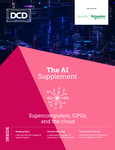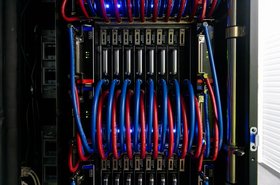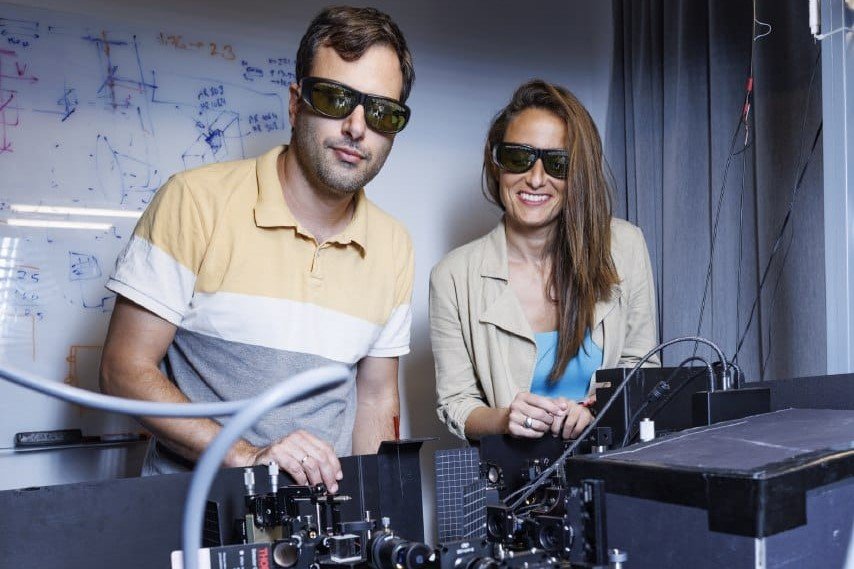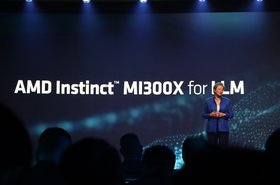For many of us, computers have always been a series of zeros and ones. There was one type of compute - it was bits and bytes and we learned to accept that. It was pure - simple, logical.
When quantum computing entered the conversation, we were panicked. What on earth was a qubit? Could we think, instead of zeros and ones, in terms of values which are simultaneously both, and not, and either or, zeros and ones, all at the same time?
Surely not.
Ruti Ben Shlomi spent her academic years doing just that. Creating quantum computers from the ground up, and ultimately deciding that a different solution was worth pursuing.
After meeting future CTO Chene Tradonsky at the Weizmann Institute of Science, the two realized that laser-based computing had a place in the conversation, and decided to establish a startup.
Founded in 2020, LightSolver has received investment from TAL Ventures, Entree Capital, IBI Tech Fund, and Angular Ventures. The laser-based computer itself is small - around the same size as a traditional desktop computer and looks similar to a standard server - and operates with low power requirements and at room temperature.
This feature appeared in Issue 50 of the DCD Magazine. Read it for free today.
For the time being, a virtual laser-based processing unit (LPU) is available at an ‘alpha’ stage, while the LPU physical units are expected to be available for order at the end of this year.
“We are developing a full-stack computer. We have three layers, so we know how to take the problem from the client side, translate it with our algorithm developers, and take it to the laser,” explained Ben Shlomi.
The way she describes it - and I sense somewhat simplified for this writer - is as a mathematical model (a quadratic unconstrained binary optimization problem - also known as QUBO) with “recipes” telling it how to talk to the laser.
“Once we have this matrix with all the spins and the connections, we know how to blow them onto an electro-optical device that we have inside the system, and then we turn on the lasers. The lasers, starting with one inside the very small cavity, interfere with each other, computing and processing the problem and converging very fast a solution, such that then we just need to detect it with a very simple camera and we can translate it back to the client side.”
The solution is particularly unique due to the lack of electronics built inside. This also means that the system can be compact, with low power requirements and the ability to operate at room temperature; notably different from the quantum computers which need to be kept close to around -273.15°C, also known as absolute zero.
According to Ben Shlomi, the lack of electronics also means the computer is faster, as it isn’t limited by the speed at which those electronics can function.
The solution is described as quantum-based, and certainly some “elements” of the process do recall that of a quantum computer, but a glimmering similarity is about as far as this goes.
In fact, the computer is completely classical, explained Ben Shlomi when asked how it is different from a photonic quantum computer.
“We’re not using single photon cells, we are using lasers and completely simple diodes - we are using these lasers which are classical wave equations, and they are all interfering. The system does have superpositions - which allow things to exist in multiple ‘states’ at once, but this isn’t exclusive to quantum computers. In this case, it is a direct effect of the two lasers imposing on each other.”
There are also some interference effects, but the LPU transfers these into a bit-language. When it comes to computing - you are always looking for a solution. Often, the first solution arrived at is not “optimal,” and different types of computers have different ways of refining and improving that.
“So, with classical computing, you can add noise and then you can overcome the barrier and continue the search and hopefully, you will find a better solution than the one that you found before,” said Ben Shlomi.
“Quantum-wise, maybe you can tunnel it out. That's what the quantum computers are counting on. But we [laser-based computing] are not tunneling out because we don't have entanglement, we don't have quantum effects, but we do have superposition.
“What does that mean? It means that in a sense, all the lasers are interfering with each other and they are scanning all the possibilities at once in a single shot. Because they can interfere where electronics can't. You can't take 1,000 wires with all the connections and process a problem like that, but with lasers you can do it in a single space domain.”
Because of this, the LPU is good for NP-hard (complex non-deterministic polynominol) problems, in other words, extremely complex problems that are both tough to solve and hard to verify if the solution found is correct.
An example of an NP-hard (and combinatorial optimization) problem that the LPU may be able to solve is the Travelling Salesman Problem (TSP). A long-referenced mathematical calculation, the TSP is solved by finding the quickest route for a traveling salesman who has to visit x amount of cities of varying distances from one another while only visiting each city once.
If the x amount was three cities: this would be relatively simple. We could all figure out the most logical way of traveling from San Francisco to LA and then to Texas, and back. But when the number of cities starts to increase, the possibilities become far too many to calculate in a reasonable amount of time - or as Ben Shlomi says - “try and do it on a GPU and it will take you till the edge of the universe.”
The LPU is ideal for dealing with a situation like this, because of the superposition effect of the lasers. It can compute several variations simultaneously. “It [the TSP] is exactly a problem that you can upload to the LPU. What's so unique about that is it will scan all the possibilities, even if you're talking about 50 cities it just means that we need 2,500 spins because it's 50 square, and 2,500 is a number that we can reach and converge a solution very fast, not the age of the Universe.”
LPUs can also be used for more traditional or simplistic compute problems. But, as explained by Ben Shlomi, if this is all you need to do, it is far more logical to just use a normal computer. There is such a thing as using technology which is over-qualified for the problem.
Ultimately, the future of computing is still somewhat up in the air. Progress is being made on quantum computers every day, and classical computers continue to get more powerful even as the breaking point for progress seems to creep closer and closer.
Despite being a classical computational solution, LightSolver’s competition comes mainly from quantum computers - which some of the biggest names in computing are exploring, including IBM. But more specifically, photonic quantum computers.
The LightSolver solution is not a photonic quantum computer - Ben Shlomi made that very clear, but it is quantum-inspired, and there are obvious similarities between the laser-based processing unit, and that of photonic quantum solutions such as those offered by OrcaComputing, PsiQuantum, and Xanadu Quantum Technologies.
Many of those solutions require the quantum computer to be kept in an absolute zero environment to operate, but others have begun to overcome this problem. IonQ, a trapped ion quantum computer company, uses laser Doppler cooling which targets individual atoms, meaning that the computer can be operated at room temperature.
Similarly, Quantum Brilliance successfully established a quantum accelerator that can be deployed in room-temperature environments, in this case by using nitrogen-vacancy centers in synthetic diamonds, effectively creating a defect in the diamond’s structure and enabling the use of its photoluminescence capability to read the qubits’ spin states.
As for whether laser-based computing or quantum computing will have continued success and longevity, will depend on the ability of both to scale quickly, and affordably.
More in HPC & Quantum
-

-

-

Episode The future of AI and HPC




